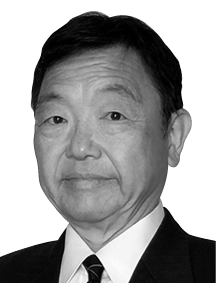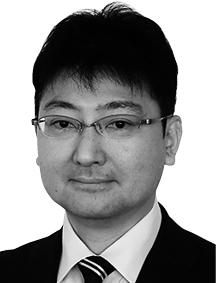[ⅰ]World-leading Advanced Factory “LighthouseNext-generation Autonomous Decentralized Architecture and DX-ready Industrial Edge Computers
Highlight
Hitachi proposes a next-generation autonomous decentralized architecture system based on the concept of “system evolution.” This concept gives a system the ability to transform, which increases its capacity to respond to uncertainty in an approach that contributes to the development of a sustainable social infrastructure. The company has been supporting the stable operation and quality of social infrastructure by developing information and control systems that enable the “small start” of operations as well as the extension and expansion of operations without work stoppages, based on an autonomous decentralized concept. The next generation of autonomous decentralization adds to this by enabling the construction of resilient systems that can flexibly respond to changes in values and technology as demanded by society. This article introduces the advantages of this next-generation autonomous decentralization concept, as well as the industrial edge computer technology that supports DX with these capabilities.

Introduction
Hitachi began development on its epoch-making autonomous decentralized system concept based on the example of living organisms in 1977 and has been applying the concept to the information and control systems of railways, steel, and other industries ever since. Protocol specifications for this Ethernet-based autonomous decentralized network were published free of charge on the website of what was the Manufacturing Science and Technology Center (MSTC) in 1999, and after the incorporation of ISO 15745(1), IEC 61158/61784(2), and other international standards starting in 2000, it spread as a platform for open and decentralized systems.
Basic Architecture of an Autonomous Decentralized System
Figure 1 — Autonomous Decentralized System Architecture (TCDs, Data Fields) TCDs are broadcasted in order to let subsystems exchange loosely coupled data via data fields without the need to directly interact with the data of other subsystems.
TCDs are broadcasted in order to let subsystems exchange loosely coupled data via data fields without the need to directly interact with the data of other subsystems.
Instead of treating subsystems as divided parts of the total system, the concept of an autonomous decentralized system starts with the subsystems first and considers the total system to be the result of integrating these subsystems(3), (4). Each subsystem operates autonomously, and even if a subsystem enters a non-operational state (for a stoppage, expansion, or maintenance), this does not affect the system as a whole. All subsystems use simultaneous reporting of messages with transaction codes (TCD) appended indicating data content to the data field without specifying an address. In this way, subsystems can exchange loosely coupled data via the data field, without directly interacting with the data of other subsystems. This also makes it possible to prevent increases in the load because the receiving side only receives data for previously registered TCDs (see Figure 1).
Advantages of an Autonomous Decentralized System
Figure 2 — Advantages of an Autonomous Decentralized System An autonomous decentralized system offers the advantages of expandability, high reliability, and maintainability, and contributes to the stable operation and guaranteed quality of social infrastructures.
An autonomous decentralized system offers the advantages of expandability, high reliability, and maintainability, and contributes to the stable operation and guaranteed quality of social infrastructures.
An autonomous decentralized system offers the following three advantages (see Figure 2):
- Expandability
Since operational applications can freely read the data in the data field, the receiving side can add or modify the data without affecting the sending side (for instance, adding a operational application). - High reliability
Since the subsystems are loosely coupled, the system as a whole can continue operating even if a partial failure occurs. It is also easy to multiplex networks and subsystems according to how important systems are. - Maintainability
Since it is easy to test operational programs to be added by using online data while the system is running, even if a system is large-scale, it is possible to guarantee quality at a low cost without the need to halt the entire system.
Future Autonomous Decentralized Systems
Autonomous decentralized systems have developed as an architecture that, thanks to the aforementioned advantages, can safely implement online sequential extensions and expansions that are optimized for the customer’s business and systems without stopping the systems.
Due to the accelerating speed of technological evolution in recent years, it has become difficult to operate with technology as it exists during system construction for long periods of time. There is also a need for dynamic capabilities(5), (6) in corporate systems that can flexibly respond to changes as old technologies are replaced with new technologies due to evolving operations, and in response to new laws and regulations led by societal issues as represented by the shift towards carbon neutrality and an increasing level of social uncertainty in a world changing due to COVID-19.
Next-generation Autonomous Decentralized Systems
Concept
Even as the values and technologies demanded by society continue to change, the ability to respond with systems that can evolve is a value offered by next-generation autonomous decentralization. As systems evolve over the long term, new elements are constantly added to the constituents (are born), after which elements are sensed, seized, and reconfigured (mature) according to the needs and the environment, after which elements that are no longer suited to the environment are deleted (die). The system elements (applications) dynamically enter and leave the system while working together to provide new value, in a constant process of improvement that is referred to as system “evolution.”
For this reason, the new concepts of next-generation autonomous decentralization are implemented by taking the mechanisms of a living organism’s biological functions and adding interoperability (analogous to a society) by linking together interchanging constituents.
For instance, with a subsystem as an operation, third parties such as those providing digital transformation (DX) join in, or an existing operation is replaced with a new operation constructed using new technology, and the system as a whole grows smarter while continuing to operate, thereby enabling continuous evolution.
Basic Architecture of a Next-generation Autonomous Decentralized System
With recent systems that use virtualization technology and the cloud, and to which moving components are added, it has become impossible to fix specific locations in the network where operations are arranged. For this reason, operational applications are treated as constituent units (autonomous units) and are mutually connected using virtual data fields that connect operations that need to communicate regardless of physical arrangements, so that information can be shared in a location-transparent fashion (see Figure 3).
With a next-generation autonomous decentralized system, an operational application connected to a virtual data field virtually broadcasts data with a virtual TCD appended to share data with other applications. The virtual TCD stores information such as the name of the data as well as semantic information (context), and the operational application added on the receiving side obtains data meaning, purpose, and other information online, thereby enabling the non-stop expansion of coordination between applications (see Figure 4).
Advantages of a Next-generation Autonomous Decentralized System
The three technologies that achieve virtual data fields and virtual TCDs to support the “system evolution” that is the advantage of next-generation autonomous decentralized systems are described below.
- Flat and transparent data coordination
The virtual data fields that expand the idea of data fields share information in a location-transparent manner, thereby allowing developers to add, modify, and delete functions without the need to consider the physical arrangement of operational applications. - Interoperability by tagging data with context information (data abstraction)
Interoperability of data tagged with context (meaning) allows meaning to be inherited between applications developed at different times, thereby simplifying the discovery and understanding of data necessary for providing various data with meanings without just relying on data names, and reducing development cost.
By obtaining data with additional information such as data units and formats, it is possible to avoid contradictions between interfaces such as processing data with the wrong units. It is also possible to continuously achieve various new service launches by adding new contexts online. - Application orchestration (redeployment)
The use of context-tagged data makes it possible to achieve system evolution while testing the behavior and data interfaces between operational applications as required by the operational applications online, and to expand while testing destination settings and the integrity of the data that is linked.
Use Cases of Next-generation Autonomous Decentralized Systems
- System evolution based on timely data utilization
Future information and control systems will continue to evolve after construction in order to improve operational efficiency while responding to changes in the market environment. Multiple operational applications will run independently while sharing various types of data, evolving while changing and increasing functionality as an overall system that includes components that were not previously envisioned.
For instance, on the manufacturing floor of an electrical appliance factory, a production control and monitoring system is used to control and monitor line operations and the flow of semi-manufactured goods. By enabling the location-transparent sharing of this data from an information system-based management system to virtual data fields, it becomes possible to track and monitor the actual state of progress according to the production plan under execution, thereby achieving visualization of production.
Furthermore, for manual work that has not been digitalized, by installing additional cameras around the production site and processing images with artificial intelligence (AI), it is possible to pick up on deviations from standard work times in order to analyze them. By differentiating causes such as disturbances to workers, changes can be made such as delegating tasks dynamically to work stalls available for backup purposes, or preparing backup operators and issuing instructions to the work site in order to solve problems. Combined with image AI utilization quality evaluation, this makes it possible to differentiate factors such as changes in worker posture and the external appearances of semi-manufactured goods, thereby improving productivity by preventing the outflow of defective goods downstream.
In this way, business and equipment in real space can be reproduced in cyberspace, which can contribute to a further shortening of the improvement cycle through data utilization and optimal instructions in response to changes in the management environment, thereby accelerating evolution of the system as a whole. - Evolution of systems through their integration and separation
Furthermore, future information and control systems will link with a wide range of system groups such as the systems of different industries, external systems, and systems with different management bodies, and will need to smoothly respond to changes in business forms caused by transformations in the need for new business evolution utilizing on-site data and equipment, as well as customer needs based on the state of society.
For instance, in order to achieve next-generation mobility as a service (MaaS), there is a need to link the different system types of railways, buses, and others while providing users with optimal transportation methods. In order to expand or optimize railway and bus lines in a timely fashion as demand changes, it is necessary to develop services while mediating between the systems and facilities of different types of industries. With next-generation autonomous decentralization, the operational applications of different systems share actual data as it flows over virtual data fields, and enable the update of applications themselves as necessary without stopping the systems. This contributes to the ability of different systems to continue operating online without influencing each other, and makes it possible to provide users with services while repeatedly connecting and disconnecting systems in a safe manner.
Industrial Edge Computers
Figure 5 — Hitachi Industrial Edge Computer CE50-10 In order to support incorporation with on-site facilities, Hitachi has designed the CE50-10 to be fanless, slitless, and spindleless, with a high degree of environmental resistance. Maintainability is improved through the consolidation of input/output (I/O) and other cable connections in front.
In order to support incorporation with on-site facilities, Hitachi has designed the CE50-10 to be fanless, slitless, and spindleless, with a high degree of environmental resistance. Maintainability is improved through the consolidation of input/output (I/O) and other cable connections in front.
In order to achieve continuous and gradual evolution of information and control systems through next-generation autonomous decentralized systems, it is extremely important to obtain a large amount of data from on-site facilities, to acquire new knowledge from this, to create value from this knowledge (DX), and to feed this knowledge back into the on-site facilities. This is why industrial edge computers are needed with the functions required to achieve the technological elements listed in section 2.3 in a layer (edge) near the on-site devices inside the information and control systems.
Industrial edge computers enable communication and real-time control of on-site facilities while also possessing the functions to support processes that were previously performed in the cloud or on a server, by continuously controlling on-site facilities in parallel with the assignment of context to data acquired from the facilities, and while also providing low-latency feedback to on-site facilities based on the results of analysis of images acquired from cameras.
Furthermore, by designing these types of operational applications based on containers, rather than preparing different dedicated applications depending on whether the application’s execution environment is the cloud, a server, or the edge, it is possible to support orchestration that deploys to an execution environment according to the system operation of generic applications.
Also, in order to achieve virtual data fields that can share information in a location-transparent fashion, the security of each component comprising a system is even more important than it was in previous information and control systems. The robustness of security is also important for supporting updates and the addition of software for orchestration, such as operating systems (OS) or operational applications, and it is necessary to use security functions such as secure booting for each component, which must function as a root of trust.
Hitachi industrial edge computer CE50-10 was developed as a product that can contribute to realizing DX and the next-generation autonomous decentralization concept (see Figure 5 and Table 1). This product supports the DX of information and control systems by its application to a proof of concept (PoC) aimed at achieving next-generation information and control systems by utilizing next-generation autonomous decentralization and the fifth-generation mobile communications standard.
Table 1 — Hitachi Industrial Edge Computer CE50-10 Specifications The following table shows the main specifications of the “embedded AI model,” which is a representative configuration of the CE50-10.
The following table shows the main specifications of the “embedded AI model,” which is a representative configuration of the CE50-10.
Conclusions
In addition to an industrial edge computer that can support DX, this article also introduced the traditional concept of autonomous decentralization and a next-generation autonomous decentralization concept that enables a system and its operations to continuously evolve as the old is replaced with the new.
As uncertainty increases in society, Hitachi will continue creating new social value while achieving continuous growth by providing systems that support operational changes through a next-generation autonomous decentralization concept and products that support this concept.
REFERENCES
- 1)
- International Organization for Standardization (ISO), “ISO 15745-3:2003” (Nov. 2003)
- 2)
- International Electrotechnical Commission (IEC), “IEC 61158-1:2019” (Apr. 2019)
- 3)
- K. Mori, “Introduction to Autonomous Decentralized System,” Morikita Publishing Co., Ltd., Tokyo (Sept. 2006) in Japanese.
- 4)
- S. Shin et al., “Autonomous Decentralized System,” Asakura Publishing Co., Ltd., Tokyo (Oct. 1995) in Japanese.
- 5)
- D. Teece, “Dynamic Capabilities and Strategic Management: Organizing for Innovation and Growth,” Oxford University Press, Oxford (Mar. 2009).
- 6)
- Ministry of Economy, Trade and Industry, “White Paper on Manufacturing Industries (Monodzukuri) 2020” (May 2020) in Japanese.











